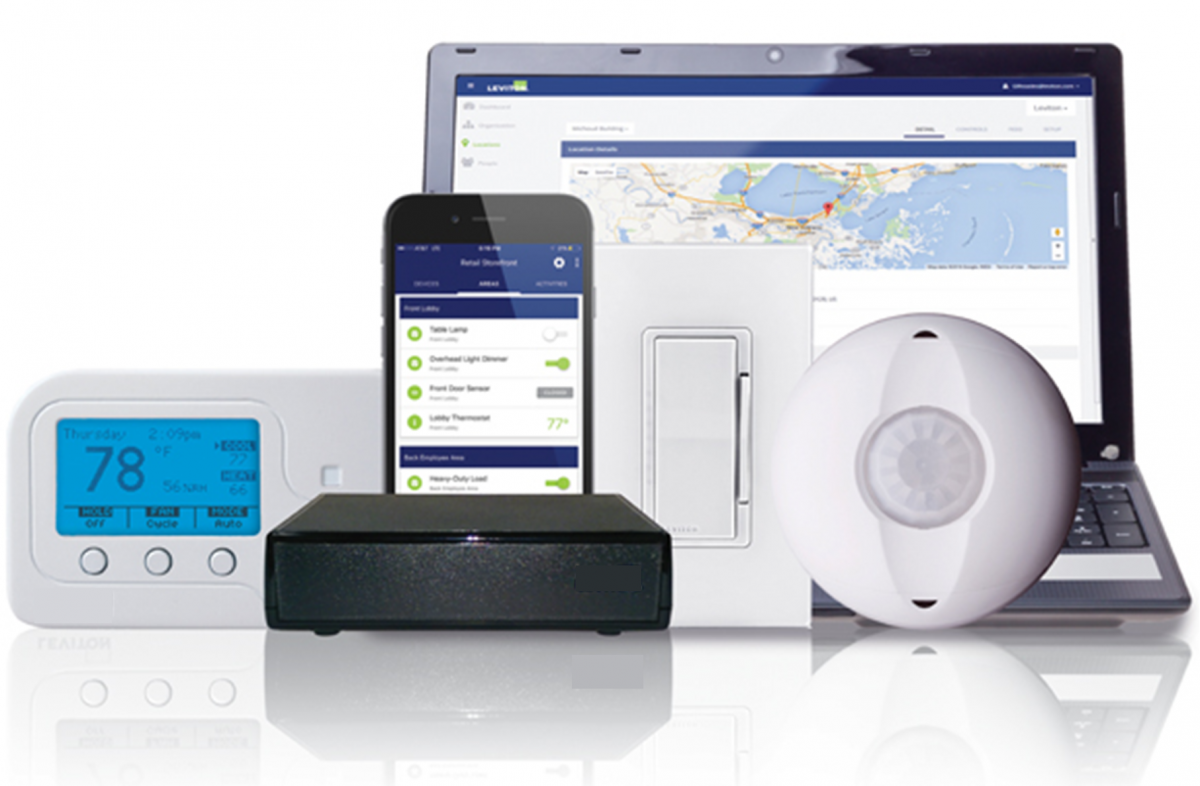
Think back to Super Bowl XLVII, February 3rd, 2013. For the first time, the Super Bowl featured two brothers coaching against one another—Jim and John Harbaugh, the head coaches of the San Francisco 49ers and Baltimore Ravens, respectively—earning it the nickname “The Harbaugh Bowl.”
You may not remember every detail of the game (unless you’re a football junkie), but there’s probably one specific moment you can recall: the moment the lights went out.
Minutes into the third quarter, a piece of equipment monitoring the electrical load of the facility detected an abnormality in the system, partially cutting power, plunging both teams and the 71,000 fans in attendance into near-darkness for over 30 minutes. Suddenly, lighting was on the minds of millions of people across America.
Although schools don’t have to worry about a power outage affecting millions of people across the country, lighting remains significant in the classroom—and on the budget sheet. According to the Department of Energy, about 30 percent of electricity consumed by a typical school is for lighting alone. In some cases, additional electricity is required to run air conditioning units due to the coincidental heat generated by outdated light fixtures. (Jim Messner, 2017)
Whether you’re remodeling your school, looking to reduce energy and maintenance costs, or simply want to improve light quality, a lighting upgrade doesn’t have to break the bank. Here are a few ways to reduce your school’s energy bill through lighting:
Occupancy Sensors
Schools and universities are a niche where occupancy-based lighting controls can drastically cut down on the energy costs of a lighting system.
Most building codes now mandate occupancy sensors that turn off all non-emergency lighting when a room is empty. Occupancy sensors can be programmed to turn off the lights after a time delay of 15 or 30 minutes of non-use (the delay period can also be adjusted to maximize energy savings). (Jim Messner, 2017)
In fact, occupancy sensors are the single most-effective energy-saving upgrade for restrooms. Since restrooms are typically vacant more than they are in use, using an occupancy sensor to shut off the lights during vacant hours can yield an outstanding payback. Similarly, occupancy-based lighting controls can be installed in hallways and stairwells, which see highly-intermittent traffic throughout the day, and where constant lighting is unnecessary and wasteful.
A key study, developed for the Illuminating Engineering Society (IES), found that installing occupancy sensors in public restrooms yielded energy savings of 73-86%; additionally, the Department of Interior states that occupancy sensors reduce energy usage up to 46% in classrooms, and according to a UC Davis study, occupancy-based lighting controls in corridors can reduce lighting power during unoccupied periods by 46-65% while automatically restoring full light output when occupants enter the space.
Blending Natural Light with Artificial Light
Taking advantage of the natural light produced by the sun is the next step to improving lighting and reducing energy costs in your school. Studies have shown that natural light provides a wide variety of benefits in an educational environment, including improved focus, boosted productivity, and better student health.
A study carried out by the Heschong Mahone Group—a consultancy firm in the energy efficiency industry—found that students scored a staggering 25 percent better on standardized tests in a naturally-lit environment than they did under artificial light.
On top of improving educational achievement and learning skills, being exposed to natural light improves overall health. A study found that students who studied under in naturally-lit classrooms were happier, healthier, and less likely to be absent due to illness. Surprisingly, the same study revealed that students who studied in artificially-lit environments had lower rates of educational achievement, increased fatigue, higher rates of absenteeism, and higher levels of stress.
Of course, natural light isn’t always available. At night, on cloudy days, or short winter afternoons, schools need to be able to augment and increase light through artificial sources. Luckily, advances in lighting control systems and lighting fixtures have made artificial lighting more affordable and efficient. A common practice that has begun finding its way into more schools is daylight harvesting—or varying the amount of artificial light produced based on the amount of natural light that is available.
Daylight harvesting works by placing sensors in around a classroom that measure the amount of natural light and automatically adjust the lights to meet the desired light levels. As more natural light floods the classroom, the artificial lights get dimmer to maintain a consistent light level. If a cloud passes overhead, the lights in the room automatically increase their output to again maintain consistent light levels.
Often times, the brightening or dimming of the lights is so subtle that teachers and students rarely notice. School administrators will notice, however, when they see the savings on their electric bill.
Brief History of Natural Light in Schools
Back in the 1970s, it was believed windows were an opportunity for distraction among students. Architects would scale down school windows in an effort to curb these distractions off the simple—and completely incorrect—idea that big windows would cause students to look out into the environment instead of focusing on schoolwork.
Jumping ahead to present day, many of those architects have adopted the opposite approach—with a far better result. Rather than distracting students, natural lighting can actually help students focus and become far less distracted. (Jim Messner, 2017)
LED vs Fluorescent
Switching from fluorescent light fixtures to LED light fixtures is another way for schools to save money on their electric bill. On average, the operational lifespan of new LEDs is 50,000-100,000 hours or more. By comparison, the lifespan of a typical fluorescent bulb is 10 to 25 percent as long, at best (roughly 10,000-25,000 hours). In addition to longer lifespans, LED light fixtures are up to 15 percent more efficient than their fluorescent counterparts.
Although LEDs have a higher cost than fluorescent lights, the price of LEDs has dropped more than 85% in recent years. To further offset the cost, most utility companies offer rebates that cover nearly 50 percent of the fixture cost to help incentivize the use of LEDs. Between the rebates offered by utility companies and the decreased operational and maintenance costs, an LED lighting system in your school can have a payback in as little as three years.
LED fixtures also have the benefit of being dimmable right out of the box. This is an improvement of fluorescent fixtures which require expensive dimming ballasts. Dimming is another energy saver for schools, in terms of daylight harvesting as previously described and manually dimming when teachers need to dim the lights to use a whiteboard, projector, or other AV device. Providing a manual dimming system allows teachers to tune the lighting to meet the needs of a specific activity or to create a mood within the classroom. (Jim Messner, 2017)
Lighting Control Systems
Lighting control enhancements were hard to justify in the past. Contractors or building owners would need to visit each room and make adjustments at each sensor to adjust the time delay for an occupancy or daylight sensor. This process made it difficult to verify that each sensor had the correct adjustment.

Since then, lighting control systems have improved by integrating them into a networked lighting control system which feeds data to a central processor regarding the electrical usage of light fixtures for the entire school. Facility managers can receive real-time updates on energy savings and electricity usage instead of having to wait for a monthly electric bill or having to wait a full calendar year to benchmark results.
System-wide changes become easier, as well; instead of a technician manually resetting every single switch in the entire school, the settings for occupancy and daylight sensors can be adjusted from the central processor, saving time and money.
How Can I Get Started?
If your school is interested in installing a new lighting system, lighting controls, and/or lighting sensors, the first step in the process is to conduct an audit of your facilities. An audit should be carried out by a lighting professional; the lighting company will gather your district’s energy consumption data, evaluate which solutions are the best fit for your school(s), and then present the findings to your administration’s decision-makers to obtain their support.
Energy Performance Lighting provides investment-grade audits using a comprehensive assessment with room-by-room exact pricing of exterior and interior lighting. Once the assessment is complete, EPL develops lighting upgrade options in a “Good, Better, Best” format with varying savings, price points, and payback windows. In addition, EPL offers budget development at no cost to school districts. We calculate within 10% of the project’s total cost and payments can be broken up into annual plans.
In Conclusion
If you’re looking for a way to improve the environment for your students and teachers, a lighting upgrade may be the solution. For more information, or to schedule on audit, contact the Lighting Certified specialists at Energy Performance Lighting by email or phone at (608) 661-5555, or you can click here to schedule a lighting service. Complete our simple assessment form and an EPL team member will contact you within 24 hours to discuss solutions for your building(s).
(This blog was adapted from School Lighting Design: Systems, Sensors, and Controls, 2017)



